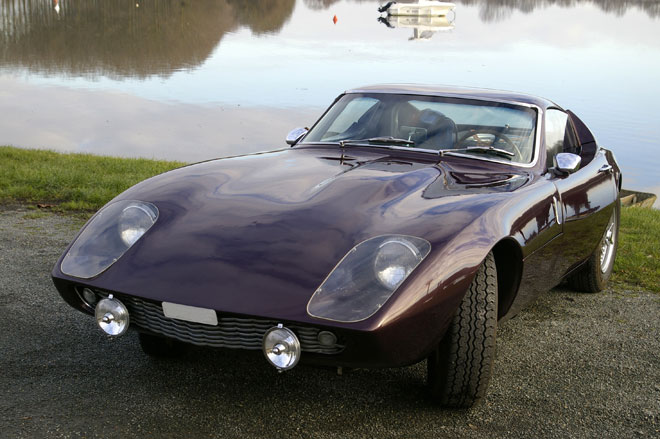In light of its popularity, and taking into consideration the potential of its rigid and low-frame chassis, the 4-cylinder Austin-Healey gave way in 1956 to the first 6-cylinder version, the 100-6, which boasted a BMC C-Series engine with a cubic capacity of close to 2.7 liters.
The success of the Austin-Healeys across the Atlantic was such that most of the cars produced between 1953 and 1968 were sold in the United States—mainly in California, where the climate was conducive to preserving car bodies.
However, at the end of the 1960s, the style of the Austin-Healeys as created in 1950 started to age. Fiberfab, a California crafts company specializing in fiberglass work, had been founded by Warren “Bud” Goodwind in 1964. This company offered body kits in resin and fiberglass that allowed the classic English roadsters—Austin-Healey, Triumph TR, and MGA—to be fitted with new bodies.
The car presented here is an Austin-Healey 100-6 from 1959. In 1968, it was fitted with an elegant and unusual fiberglass body, with a sleek profile and stylish lines inspired by the larger Italian GTs of the time. It is claimed that Fiberfab only produced five Healey Jamaicans in total.
This one has been completely restored, starting from the bare chassis, stripped and subjected to anti-corrosion treatment prior to re-assembly of the engine and transmission (four gears plus overdrive). The running gears, brakes (with disks at the front), and the wire wheels (Borrani with central locking) are new. With the pleasant sounds it makes, the exhaust system reinforces the sporting character created by the wire wheels. This beautiful and extremely rare Austin-Healey Jamaican works well and has a tried-and-tested mechanical system. It is reliable, easy to maintain—and offers an exceptional opportunity for “driving with a difference.” It comes with its French vehicle registration document.

